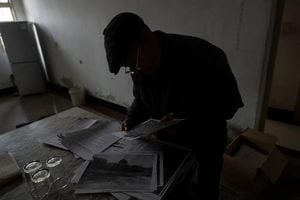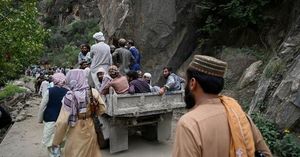Across two continents, the rising cost of electricity is sparking heated debates, household anxiety, and a flurry of jokes that barely mask deeper fears. In Kerala, India, and in Ghana, Africa, millions of families and businesses are bracing for a future where flipping a light switch may feel more like a luxury than a basic right. Two recent decisions—one by the Kerala State Electricity Board (KSEB) and another proposed by the Electricity Company of Ghana (ECG)—are at the heart of these anxieties, each reflecting a broader struggle to balance economic realities with social fairness and energy security.
On September 9, 2025, KSEB delivered what many are calling a major blow to seven lakh (700,000) domestic consumers who use more than 250 units of electricity per month. According to The Hindu, the utility announced it would continue collecting a 25 percent extra night-time tariff not just for the hot summer months, but for the entire year. This surcharge, introduced in April as a seasonal measure to curb surging summer demand, now looks set to become a permanent fixture on household bills.
The numbers are stark. The average rate charged during the night peak hour has jumped to Rs 8.39 per unit, compared to the normal rate of Rs 6.90 per unit. There’s a 10% discount dangled for daytime usage—but as many Kerala families will tell you, most domestic consumption still happens after the sun sets. The so-called Time of Day (TOD) system, which imposes different rates depending on the hour, was rolled out last April for both domestic consumers and small industries with a connected load under 20 kilowatts. The move was designed to stave off a looming power crisis and avoid the need to buy expensive electricity from outside the state.
With the Electricity Regulatory Commission’s blessing, KSEB has justified the year-round surcharge as a way to reduce night-time load and encourage maximum use of solar power during daylight hours. Out of the seven lakh TOD customers, 1.45 lakh are also Purappura solar customers, who theoretically stand to benefit from the daytime discount. But for most, the pain is immediate and the adjustment daunting.
Under the new system, the rates are clear but the choices are tough: from 6 am to 6 pm, electricity is 10% cheaper than normal; from 6 pm to 10 pm, it’s 25% more; and from 10 pm to 6 am, it returns to the regular rate. For small businesses, the night penalty is even steeper—50% extra during peak evening hours. The aim, KSEB says, is to nudge both families and businesses toward smarter, solar-powered consumption patterns. Yet, for many, it feels less like a nudge and more like a shove.
Meanwhile, thousands of kilometers away, Ghanaians are grappling with a proposal that’s even more dramatic. The Electricity Company of Ghana (ECG) has pitched a staggering 225% hike in its Distribution Service Charge (DSC), planning to raise the rate from 19 pesewas to 61.8 pesewas per kilowatt-hour for the 2025–2029 tariff period. As reported by Channel1News, the news has triggered a wave of satire and street humor—one popular refrain: “ECG, so you won’t off only the lights, now you want to off our pockets too?”—but beneath the laughter is a palpable sense of dread.
The impact on households is immediate and severe. Imagine a single mother in Kasoa, whose GHS 100 prepaid electricity card already barely lasts two weeks. With the proposed increase, she’ll need GHS 225 for the same consumption. That’s not just a budget adjustment; it’s a fundamental restructuring of family life. Families are rationing electricity, ironing just once a week, limiting television time, and swapping out rice cookers for coal pots. According to the Ghana Statistical Service (2024), such hikes could push electricity from a basic utility into a luxury, deepening poverty for the country’s most vulnerable.
Small businesses, which contribute over 70% of Ghana’s GDP (World Bank, 2023), face an equally grim outlook. A seamstress in Kumasi quips that ECG is “sewing her profits tighter than kaba,” while a barber in Madina has posted a new sign: “Haircut – GHS 40 (ECG surcharge included).” These jokes, while clever, mask the bitter reality that higher electricity costs may force businesses to raise prices, cut staff, or even close their doors. Energy-intensive industries, from mining to steel to agro-processing, may have to shelve expansion plans as more cash is diverted to power bills. The likely result? Higher prices for goods and services, fueling Ghana’s inflation spiral.
The Ghana Union of Traders Association (GUTA) has warned that tariff hikes without efficiency gains could “wipe out many SMEs,” according to Channel1News. The macroeconomic stakes are high: a 225% rise in the DSC could push inflation above the Bank of Ghana’s target band of 6–10%, worsen exchange rate pressures, and sap consumer confidence. As EnergyNewsAfrica notes, the ECG’s proposal is more than an energy policy—it’s an inflation policy in disguise.
ECG, for its part, insists the hike is necessary. The rationale? Cost recovery, as the gap between operational costs and approved tariffs has created huge deficits. The depreciation of the cedi and general inflation have driven up the price of transformers, copper cables, and spare parts. Infrastructure upgrades—like smart meters and expanded distribution networks—require urgent investment. Without higher tariffs, ECG warns, the company risks financial collapse, threatening national energy security.
But Ghanaians are skeptical. As one resident, Bismarck Kwesi Davis, put it: “In Ghana, tariffs rise faster than our salaries, yet hope remains the only current ECG cannot bill us for.” The credibility gap is real. Many consumers question whether paying more will actually lead to better service, or simply fund inefficiencies within the utility.
Experts and advocacy groups have called for a more strategic reset. Instead of perpetual tariff hikes, they urge ECG to focus on reducing its technical and commercial losses—currently estimated at 24–25% of distributed power. Greater transparency, including periodic audits showing how tariff revenues are spent, is seen as essential. There’s also growing support for integrating more renewable energy, such as solar and mini-grids, to reduce dependence on costly distribution upgrades. Protecting lifeline tariffs for the poorest households and linking any future rate increases to measurable improvements in service reliability are also high on the reform agenda.
Back in Kerala, similar questions about fairness and sustainability are bubbling up. While KSEB’s move aims to encourage solar adoption and reduce peak demand, critics argue that the year-round surcharge punishes those who have little flexibility in when they use electricity. For many, especially in a state where daytime domestic consumption is naturally lower, the daytime discount feels like cold comfort.
In both Kerala and Ghana, the debate over electricity tariffs is about much more than numbers on a bill. It’s about the daily choices families must make, the survival of small businesses, and the broader challenge of building energy systems that are both sustainable and socially just. As policymakers grapple with these tough trade-offs, the voices of those most affected—often heard in jokes, protests, or quiet resignation—remind us that resilience is not a substitute for real reform.
For now, the lights are still on in Kerala and Ghana, but for many, the question is no longer just “How much does it cost to keep them burning?”—it’s “How much longer can we afford to?”




